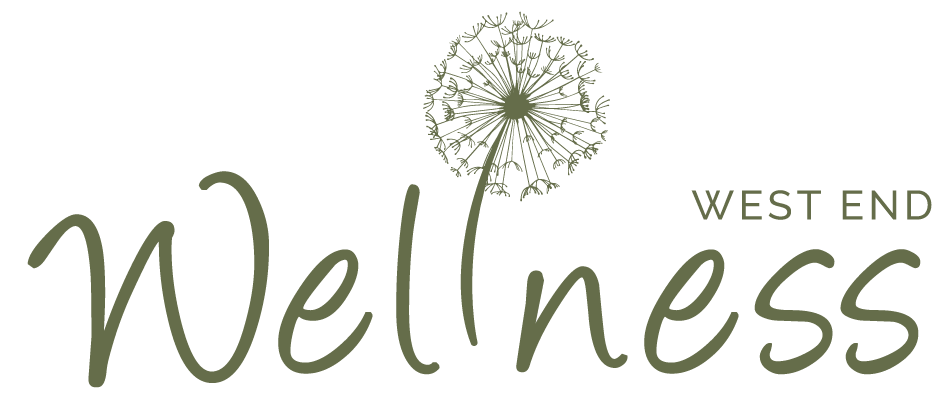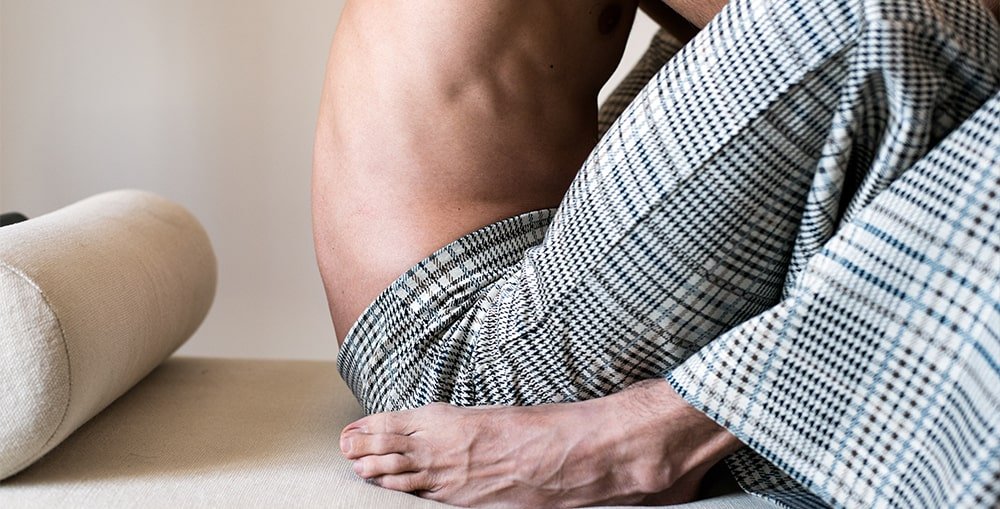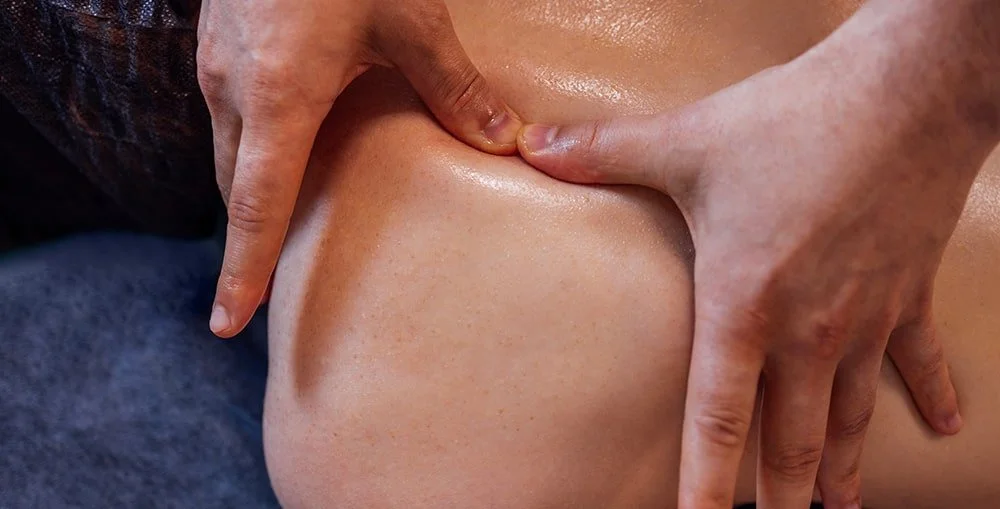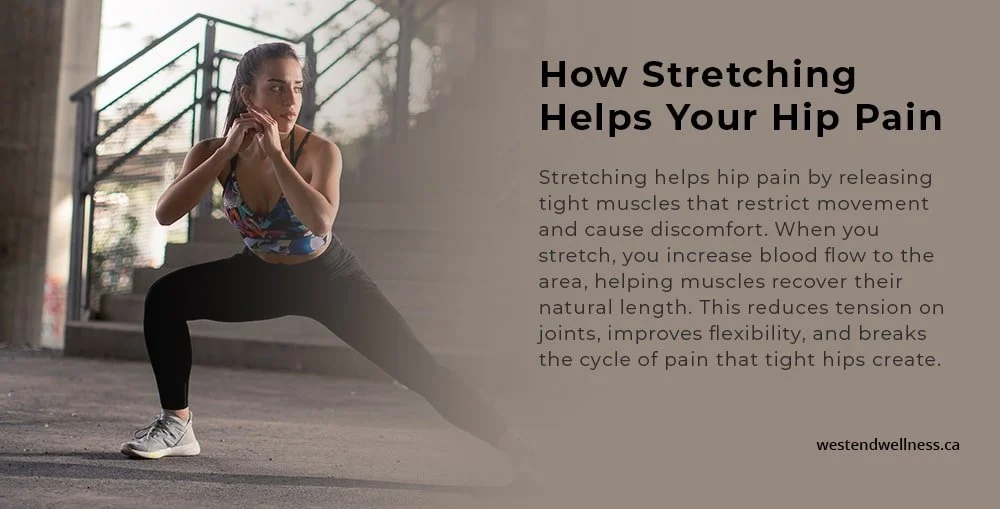Tight Hip Flexors? How Trigger Points Hold the Key to Pain Relief
Table of Contents Show
Quick Summary
Living with tight hip flexors can make everyday movements a challenge. This article explains how trigger point therapy can help release those stubborn muscle knots in your hips.
You'll learn what causes hip tension, how to spot the signs, and ways to find relief. Whether you're dealing with pain from sitting too long or intense workouts, understanding how trigger points affect your hips is your first step toward better movement and comfort.
TL;DR – Trigger Point Therapy for Tight Hip Flexors
Tight hip flexors are a common issue from prolonged sitting, leading to pain and limited mobility.
Trigger points (muscle knots) in the hip flexors can refer pain to the lower back, hips, or thighs.
Trigger point therapy uses targeted pressure to release these knots and restore movement.
It can reduce pain, improve posture, and enhance flexibility.
Regular sessions, paired with stretching and movement, offer long-term relief and support recovery.
Sitting all day at your desk and feeling that familiar tightness in your hips? You're not alone. That nagging discomfort when you stand up or try to exercise isn't just annoying – it's your hip flexors crying out for help.
Here's the good news: those tight, achy hip flexors might find relief through trigger point therapy, a hands-on technique that targets those stubborn knots in your muscles.
As a massage therapist, I've seen countless clients walk in with stiff hips and walk out feeling looser, more mobile, and ready to move.
Think of trigger points as tiny muscle tension knots that can cause pain and limit movement. By working with these specific spots, you can help release the built-up tension in your hip flexors, making everyday movements feel like a chore.
Let's look at how trigger point therapy can help you move more freely and get back to doing what you love – without those hip flexors holding you back.
Why Your Hips Might Be Hurting
Our hips deal with a lot in modern life, and there are several reasons why they might be giving you grief.
Understanding what's causing your hip discomfort is often the first step toward finding relief.
-
Your daily routine might be the biggest culprit. Those long hours at your desk? That's your hip flexors staying shortened all day. Even your favourite Netflix binge sessions can contribute to hip tension. When we sit for extended periods, our hip muscles adapt to this position, becoming shorter and tighter over time.
-
Whether you're a weekend warrior or a daily gym-goer, your workout habits can affect your hips:
Running without proper warm-ups
Suddenly increasing your exercise intensity
Skipping post-workout stretches
Overtraining certain muscles while neglecting others
-
How you carry yourself matters. Poor posture doesn't just affect your back – it can create an imbalance in your hip muscles. Standing with your weight on one leg, carrying heavy bags on one side, or even sleeping in awkward positions can all contribute to hip tension.
-
Here's something surprising – stress can make your hips tight. When we're tense, we often hold that tension in our hips. Think about how you might clench your muscles during a stressful workday without even realizing it.
-
Your job or hobbies might be putting extra strain on your hips:
Standing all day on hard surfaces
Regular heavy lifting
Repetitive movements
Driving for long periods
Symptoms of Tight Hip Flexors
Your hip flexors might be sending you warning signals throughout your day. If you're experiencing any of these common signs, your hip flexors may be tighter than they should be:
-
That restless feeling after sitting through long meetings or car rides? Notice how you need to shift positions often or can't get comfortable? Your hip flexors are likely feeling the strain of being shortened for too long.
-
Pay attention if you feel an arch in your lower back when standing, or if your belly seems to tilt forward slightly. This posture often shows up when tight hip flexors are pulling on your spine.
-
A feeling of stiffness when you take your first few steps after sitting
That 'rusty hinge' sensation when climbing stairs
Difficulty lifting your knee toward your chest
A limiting feeling when trying to take longer strides while walking
-
You might notice discomfort when trying to find a comfortable sleeping position, or experience stiffness first thing in the morning that takes time to work out.
-
Tight hip flexors often create a chain reaction in your body. You might notice:
Lower back pain or aches, especially after long periods of sitting
Pain or discomfort in the front of your hip when walking
Knee pain when walking up stairs
A feeling of weakness in your core
Reduced flexibility in your hip area
The Origins of Trigger Point Therapy
While people have been pressing on sore muscles for relief since ancient times, it wasn't until Dr. Janet Travell started mapping out pain patterns in the 1940s that we really began to understand why your hip pain might actually start from a tight spot in your lower back, or why that ache in your thigh might come from your hip flexors.
Dr. Travell, along with Dr. David Simons, made a fascinating discovery: they found that these muscle knots followed predictable patterns.
For example, they showed how trigger points in your hip muscles could create a domino effect of pain and tightness throughout your lower body.
Their work wasn't just academic – it gave massage therapists and healthcare providers practical ways to help people find relief from stubborn muscle pain.
Today, massage therapists use these time-tested techniques and a modern understanding of body mechanics to help release those frustrating knots in your hips and restore comfortable movement to your daily life.
How Does Trigger Point Therapy Help Your Hips?
Picture your hip muscles like a tangled headphone cord.
Just like you'd work out those knots in the cord with your fingers, trigger point therapy uses careful pressure to release the tight spots in your hip muscles.
Your therapist will feel for these tender knots – they might be in your hip flexors, along the side of your hip, or even in the muscles of your lower back that connect to your hips.
When your therapist finds one of these spots, they'll apply steady pressure – kind of like pressing your thumb into a ball of clay.
Yes, it might feel a bit tender at first (like when you massage a sore muscle after a workout), but this temporary discomfort has a purpose.
As the trigger point releases, you'll often feel a sensation of relief, like finally stretching after being cramped in an airplane seat.
Some therapists might also include other techniques alongside the pressure work. They might gently massage the surrounding area to help your muscles relax or use specialized tools to target particularly stubborn spots.
The goal is simple: to help your hip muscles return to their natural, relaxed state so you can move freely again – whether that's reaching down to tie your shoes or stretching into your favourite yoga pose.
What Are Trigger Points in Hip Muscles?
You know that spot in your hip that feels like a tiny knot you can't quite work out? That's likely a trigger point.
These spots feel like small, tender lumps in your muscles – almost like a pea under your skin. In your hips, they often show up in muscles like your hip flexors, piriformis, and the muscles running along the side of your hip.
Think of your hip muscles as rubber bands. When they're working well, they stretch and snap back easily.
But sometimes, from sitting too long, intense workouts, or even stress, parts of these bands can get twisted and knotted.
That's your trigger point forming, and it's more than just a tight muscle – it's a specific spot that can cause pain right there or send discomfort down your leg or into your lower back.
What makes these hip trigger points tricky is that they don't just affect one area. A trigger point in your hip flexor might make your lower back ache, or one in your outer hip could send pain down your thigh.
It's like pulling one thread in a sweater – the tension shows up somewhere else.
What to Expect During a Session
Wondering what to expect when you walk in for your first trigger point session for hip pain? Let's walk through it together.
First, your massage therapist will chat with you about your hip discomfort and watch how you move.
They might ask you to walk a few steps or do some simple movements – this helps them spot which areas around your hips are giving you trouble.
Next comes the hands-on part. Your therapist will feel around your hip area – the front where your hip flexors are, the side by your hip joint, and even your lower back and glutes.
They're searching for those specific tight spots that might be causing your discomfort.
You'll probably recognize these spots when they find them – they might feel tender, like a bruise that's almost healed.
When they find a trigger point, they'll apply steady pressure. Some spots might feel a bit sensitive (like pressing on a sore muscle after exercise), but here's the key: you're always in control.
Your therapist will check in with you about the pressure – too much? Too little? They'll adjust to make sure you're comfortable while still being effective. Think of it like adjusting the temperature of a hot shower – you want it just right.
Most people find that as the session progresses, those tender spots start feeling less sensitive, and their hips begin feeling looser and more mobile.
Understanding Trigger Points and Myofascial Release: What's the Connection?
While trigger point therapy and myofascial release are often mentioned together, they're like close cousins rather than identical twins. Here's how they relate:
Trigger point therapy targets specific knots in your muscles with direct pressure - it's like using your finger to press out a small knot in a shoelace.
The focus is on those precise, tender spots we call trigger points.
On the other hand, myofascial release therapy works with the whole web of connective tissue (fascia) that wraps around your muscles.
Think of it like smoothing out a wrinkled bed sheet - you're working with broader areas using gentler, sustained pressure.
How They Work Together:
Often, you'll find trigger points in areas where the fascia is also tight.
That's why many therapists use both techniques in a session. They might start with myofascial release to loosen the larger area, then zero in on specific trigger points, or vice versa.
For your hip pain, this might mean:
Using myofascial release to work on the whole hip area
Then, targeting specific trigger points in your hip flexors
Finishing with more myofascial work to help the area integrate the changes
Discover how myofascial release therapy can help ease your chronic pain. Ready to find relief? Book your session today and start feeling better.
Frequently Asked Questions
Why do trigger points hurt so much?
Think of trigger points like a bruise - they're sensitive spots in your muscle tissue that have become irritated and tense.
When pressure is applied, you feel tenderness because these areas are already stressed and contain trapped waste products from muscle tension. The good news? This discomfort is temporary and often leads to relief.
Are trigger points the same as muscle knots?
Trigger points are specific, irritable spots within a muscle that can cause pain in other areas - like how a trigger point in your hip might cause pain down your leg.
Regular muscle knots are more general areas of tension that typically only hurt in one spot. Trigger points are like the traffic jam causing a backup elsewhere, while muscle knots are just a slow spot on the road.
What are the disadvantages of trigger point therapy?
Like any treatment, there are a few things to consider:
You might feel sore for a day or two after treatment (similar to post-workout soreness)
Results can vary - some people feel immediate relief, others need several sessions
It's not suitable if you have certain medical conditions or injuries
The therapy may be temporarily uncomfortable during treatment
You'll need to stay hydrated and move gently after sessions
If you have any further doubts or questions regarding this subject or another treatment, contact one of our experienced Acupuncturists or Registered Massage Therapists here at West End Wellness Clinic. You can either give us a call or make an appointment.
Disclaimer: Please remember this article is for informational purposes only and should not replace professional medical advice. Please consult a healthcare provider or someone with the correct qualifications before starting any new exercise or treatment program.




